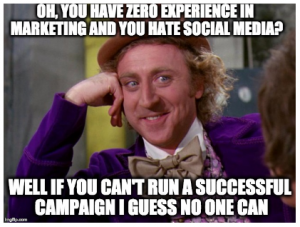In Asia Pacific alone, it’s estimated there are more than 1 billion mobile users – and this is expected to grow to 1.4 billion users by 2019. Over the last five years we have witnessed a massive shift to digital (after all, an estimated 87% of smartphone users regularly have their device near them), which means we have to adapt our marketing communications to fit mobile.
This doesn’t just mean having an app or mobile-friendly website (yes, those are important from a UX perspective), but also maximising the use of content in the mobile space. I’m talking about creating content fit for a small screen that makes a big impact.
Here are three ways to help get your brand noticed:
-
Get visual
If you’re anything like me, you get bored and lose interest when reading large paragraphs of boring text that never seem to end. Am I right? Instead, visually stimulating content – images, graphics, video – gets the message across quickly. Time is money and people like to absorb information in quick spurts, so don’t let your content get lost in the digital jungle.
Try mixing up your Facebook News Feed with some cool images or videos to capture interest. People like variety, so shake your content up!
-
Use emotive messaging
Most purchases are driven by pure emotions. What make you choose one brand over the other? Why did you buy that particular car, or pair of shoes? There is a massive divide between our needs and wants, and most of us opt for the want. Why? Because we experience certain emotions when we own a particular product or experience something new.
To tap into this emotion, you need to create content that pulls on people’s heartstrings. Create a heart-warming video or series of graphics – anything that can ignite a sense of desire for a particular product or service.
-
Create an immersive experience
No one likes feeling left out. We want to be in the know, and brands today are winning when they allow their audience to feel like they are a part of something.
Social media platforms like Instagram, Snapchat and Facebook enable brands to easily distribute content in a creative and engaging fashion. Take your fans on a journey – whether you are using Facebook’s 360 video feature to showcase your event, or are sharing behind the-scenes snaps of your latest clothing line on Snapchat. Think creatively and develop immersive experiences for your fans.
There are so many ways brands can present content. With our eyes fixated on the small screen, we all need to think about how we can tailor our marketing to meet the demands of our mobile audience.
Need help developing your content marketing strategy? Get in touch with us today at [email protected].


